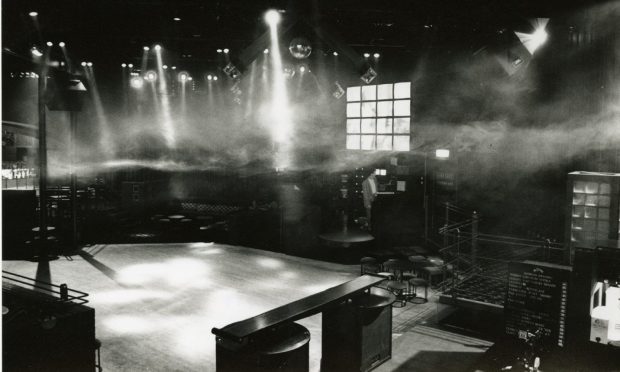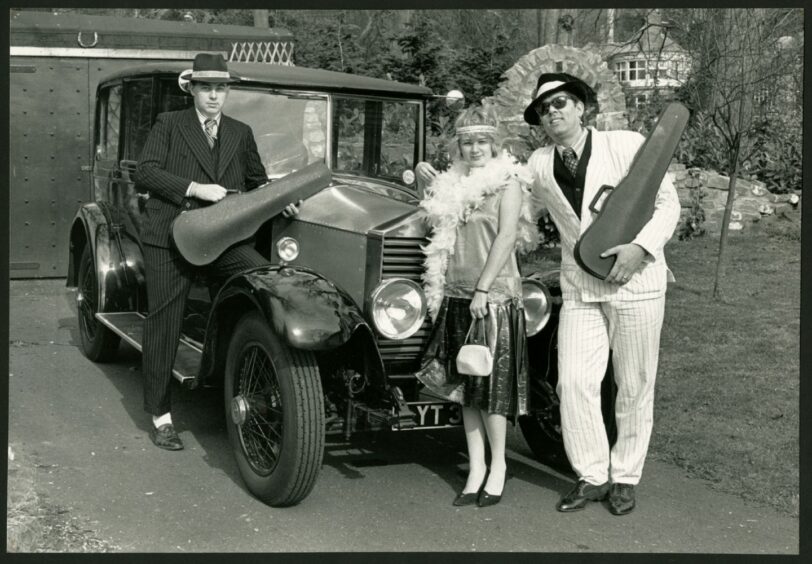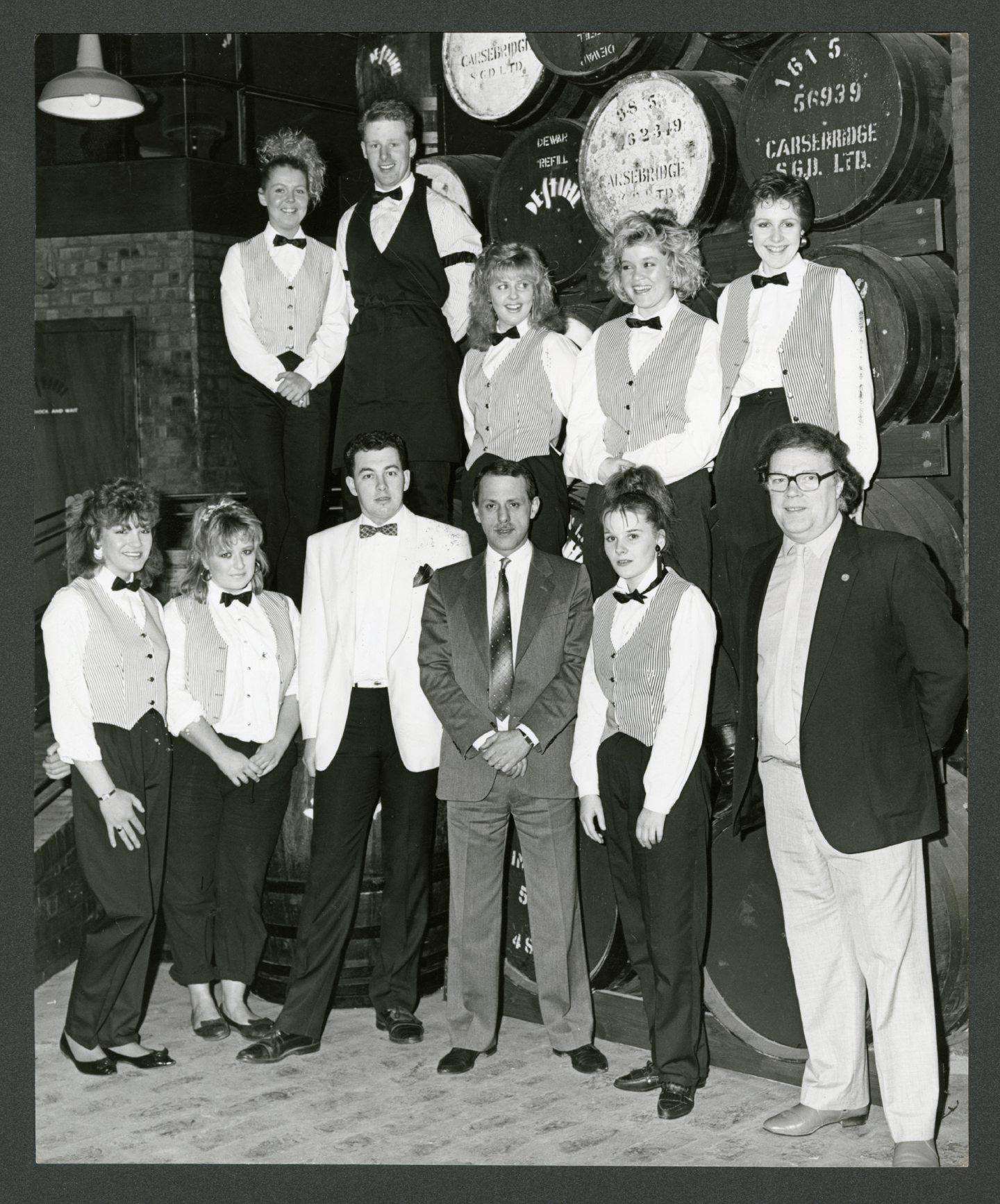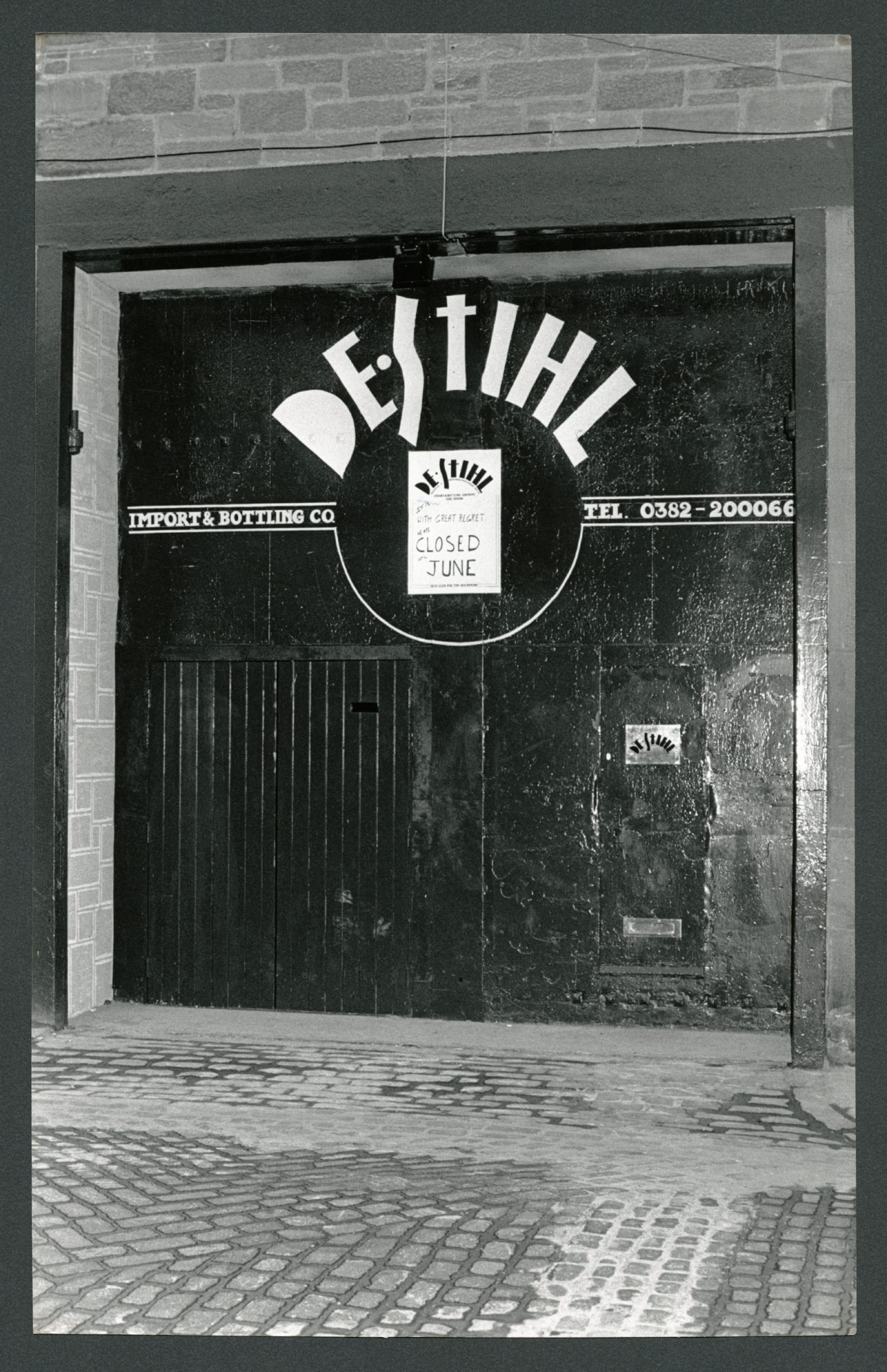De Stihl’s nightclub opened in 1988 to give “fashionable folk-about-town” the chance to go back to the speakeasies of the 1920s.
The mastermind behind the new venture was Murdo Wallace.
Here was a well-known nightclub entrepreneur who wanted to recreate the ‘blind pigs’ and ‘gin joints’ from the prohibition era in the United States in the 1920s.
Illegal taverns that sold alcoholic beverages came to an all-time high and were nicknamed “speakeasies” for how low you had to speak the “password” to gain entry.
“The idea is a Twenties scene, based on the idea of a speakeasy with the ‘front’ of a legitimate business,” said Murdo.
“Even the name, De Stihl’s, is a play on words, to suggest an illegal distillery of US prohibition days – you could say it’s in the ‘spirit’ of the period!”
A feature in the Evening Telegraph in March 1988 said: “Once you’re through the hidden door, though, De Stihl’s is what it seems to be – an imaginatively and elegantly conceived nightspot offering sumptuous surroundings and a lot of attractions.
“The distilling theme is carried on with two simulated stills reaching up the roof, and a feature which has the water bubbling away on its way to them; and in one corner, there’s even an auger for transporting the grain to the stills.
“The auger is real too, as it came from a grain warehouse.
“A feature of De Stihl’s is the clever use of different levels – both the bars on the ground floor are two-sided, with different levels, one matching the dance floor, and one higher, two or three steps above.
“There is also a first-floor bar, with its own seating area, from where you can see the whole joint boogying beneath.”
There was specific themes on different nights with Wednesdays, for example, being over-35s night, which would often include live bands on the big stage.
Thursdays were promotion night and the weekends would bring live entertainment and special guest appearances including Radio 1 DJ Bruno Brookes.
Brookes, who presented a rundown of the Top 40 every Sunday at the time, appeared on the first Friday that the new club opened in South Ward Road.
Sundays would feature different kinds of promotions with discounted admission for certain groups, such as nurses.
The club was also available for private functions on Mondays and Tuesdays, with the first being booked by British Airways for a promotion for local travel agents.
Eddie Tobin was area manager for Stakis when De Stihl’s opened.
He said: “We had the best years, I would like to think, because we were the busiest club in Dundee.
“The first showing of Michael Jackson’s Thriller in Scotland was in that club.
“We had a 16-television screen and were the first premises to show it outside of London.
“We stored jute in there at one time, and it turned into what I think was the best nightclub Dundee has ever had.
Many Dundonians, I would imagine, have met and fell in love and married from there.”
Eddie Tobin
“Murdo Wallace, a well-known Dundee operator who had the Barracuda and lots of things, had the plans for it.
“We met him in what was the Stakis Hotel and he was telling us he had this plan.
“We bought it before the first brick was laid.
“It wasn’t a place where you needed to bring big acts, because the room was so good — everybody loved it, anyway.
“Many Dundonians, I would imagine, have met and fell in love and married from there.
“When we opened, it was in the new romantics era — Soft Cell, Duran Duran, Spandau Ballet.
“It was a great era for dance music and nightclubs.”
De Stihl’s survived two fire attacks in 1992 and later changed hands and became clubs including Jumpin Jaks and, more recently, Okupa.
The Tasting Rooms was also based at the former warehouses until a fire in 2009, then a bulldozer, finally pulled the buildings down in 2014.
That was it.
They were all gone.
But memories still remain of the time the bootlegging days reached Dundee.
More like this:
Cheers to the beers: Do you remember these classic Dundee pubs?
Sex Pistols, Dire Straits and Motorhead performed at the Bowling Alley in Dundee













